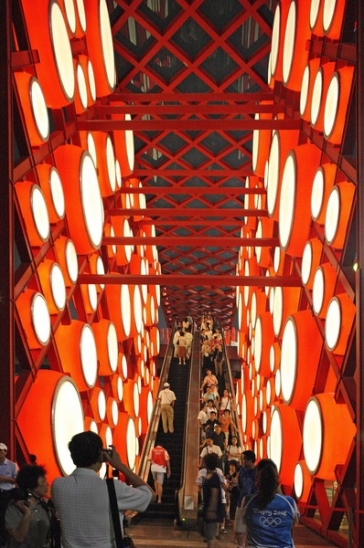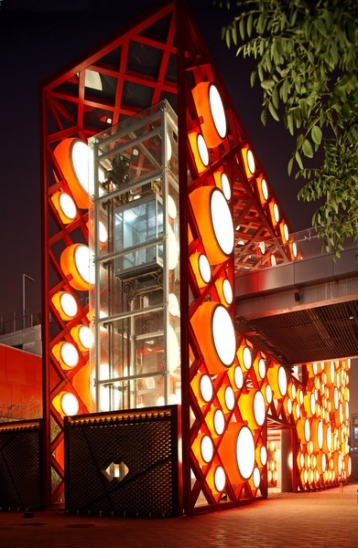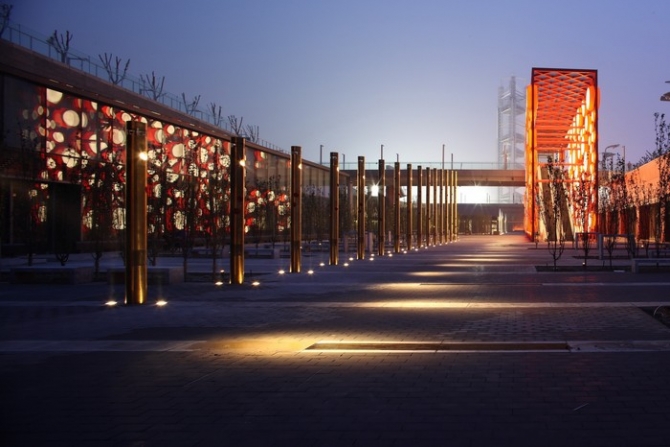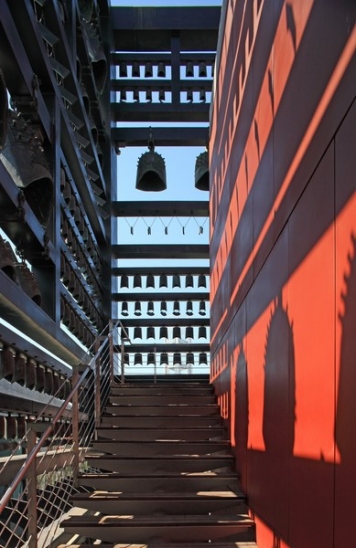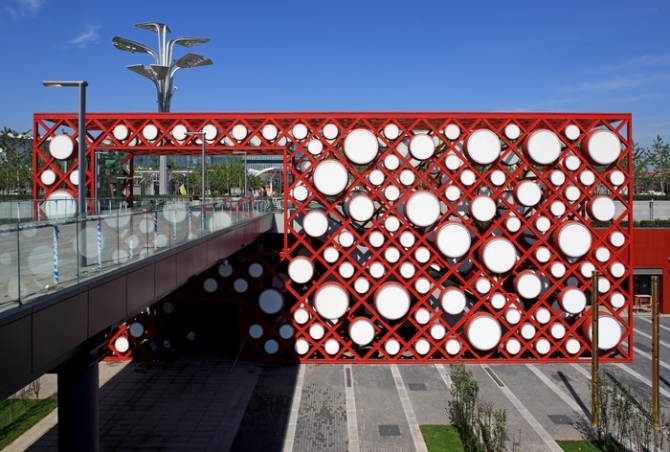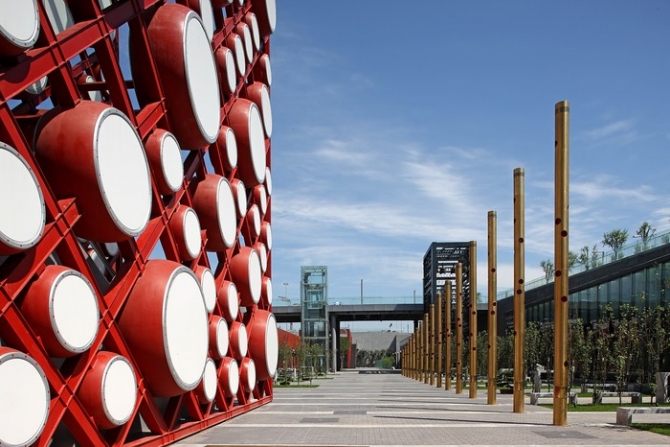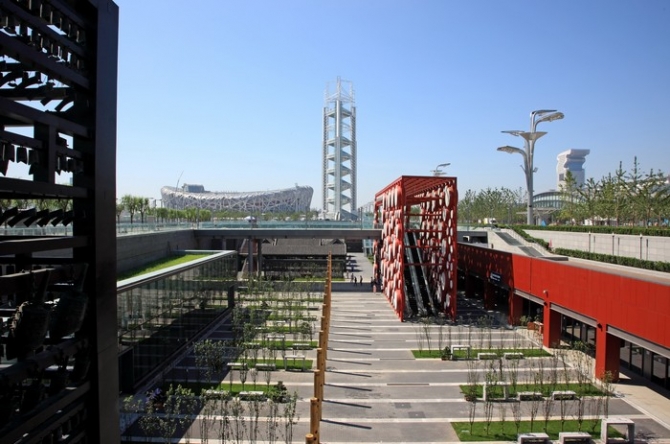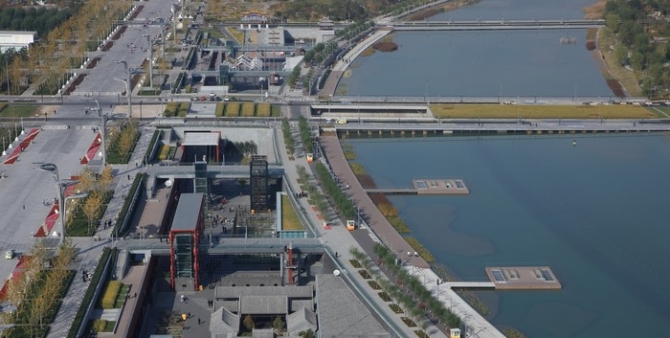奥林匹克公园传统元素下沉庭院NO.3 Subsided Court of Olympic Green
中国传统文化中充满富于智慧的象征和暗示,京戏里马鞭轻摇就过了千山万水,园林中一座空亭就可以吐纳山川灵气。为与奥运盛典的欢庆氛围相契合,同时体现大众参与、体验、互动的奥运精神,我们将“礼乐文化”作为下沉庭院中体现中国传统文化的主题,通过音乐与建筑微妙的结合,弘扬中国人的内在修养。
设计选择“钟”、“磬”、“鼓”、“萧”等礼乐庆典中的乐器,结合室外扶梯、电梯、楼梯等交通空间,形成“鼓墙”、“钟磬塔”、“排箫”、“琴幕”等景观点,同时利用体现黄铜格栅分隔铺地,体现“琴弦”意向,将以上各点串联整合。
与“丝竹之声”的空间体验呼应,景观设计选取竹林作为绿色植物主题。按照黄铜格栅所划分矩阵式排列的竹林,成为分割空间的“景观屏”。而黄铜格栅的局部翻起,则形成座椅、桌台等,形成满足人的“停、站、坐”等不同要求。
Traditional Chinese culture always embodies wise symbolization, waving a horsewhip means the actor traveled thousands of miles; siting a pavilion could concentrate natural spirit into a garden. When we want to present the happiness and hospitality of Beijing in the Olympic Game, we choose the elements of “Ritual and Music Culture” as a key in the design of subsided court.
We used red walls, golden color and bell tower. The red wall is a steel structure filled with more than one hundred of “drums”, which can be beaten and are installed with lamps. They are drums in the day and lamps at night. The combination of drums and lamps builds a festive red gate for Olympics. The golden color is not on the glazed tiles, but a row of “cooper Chinese vertical bamboo flutes” with holes on their pipes. Some bells for ritual music hang on steel frames which swing in case of wind and spread melodies around. Strings are installed in front of windows and can be plucked. In addition, we have also planted bamboos and placed pews, creating an environment to enjoy the ancient ritual music.
工程地点:北京市奥林匹克公园
设计时间:2007年
竣工时间:2008年
合作建筑师:傅晓铭、史丽秀、巩磊、石磊

